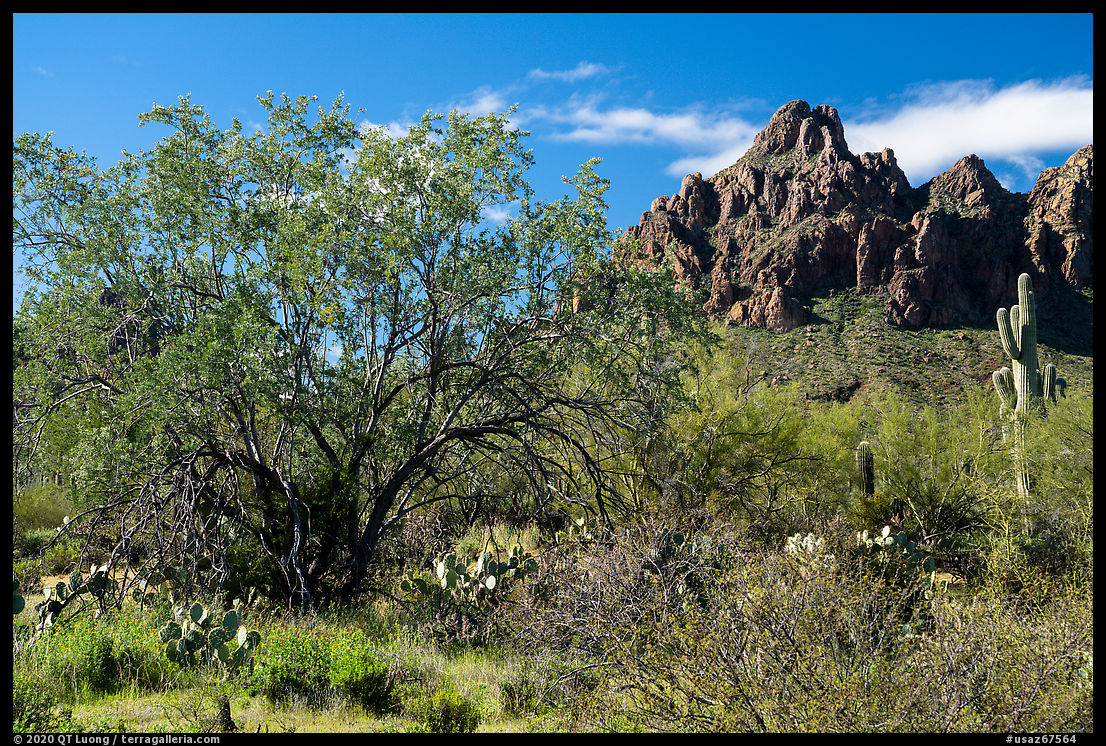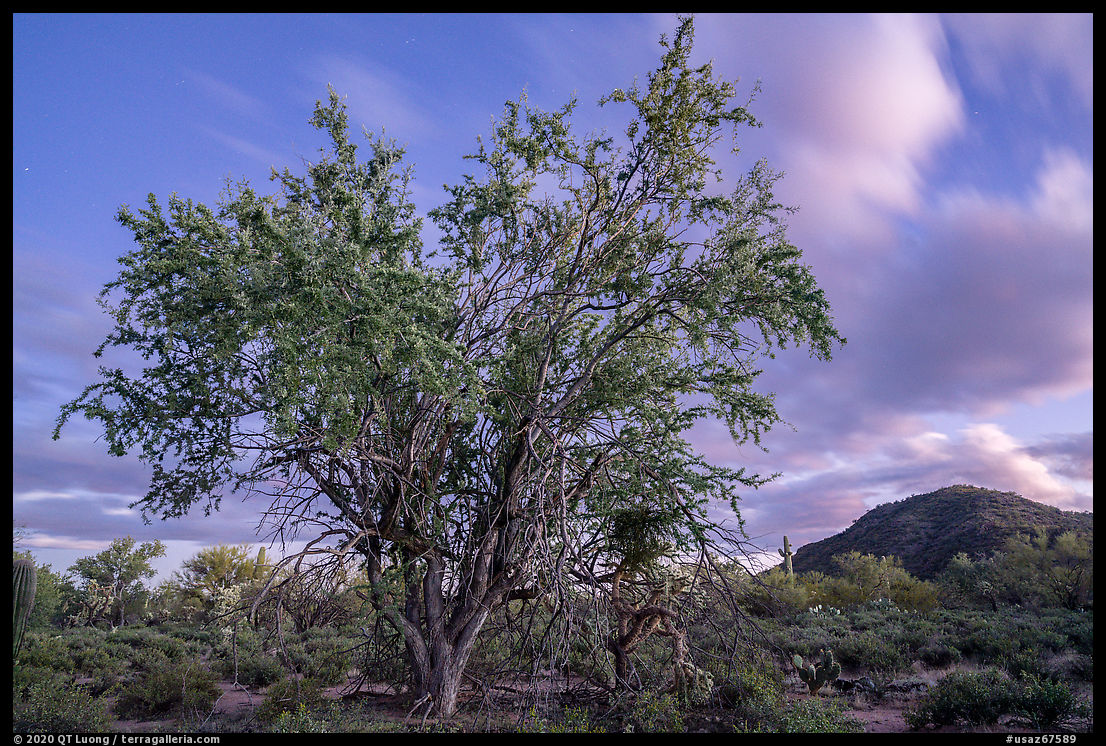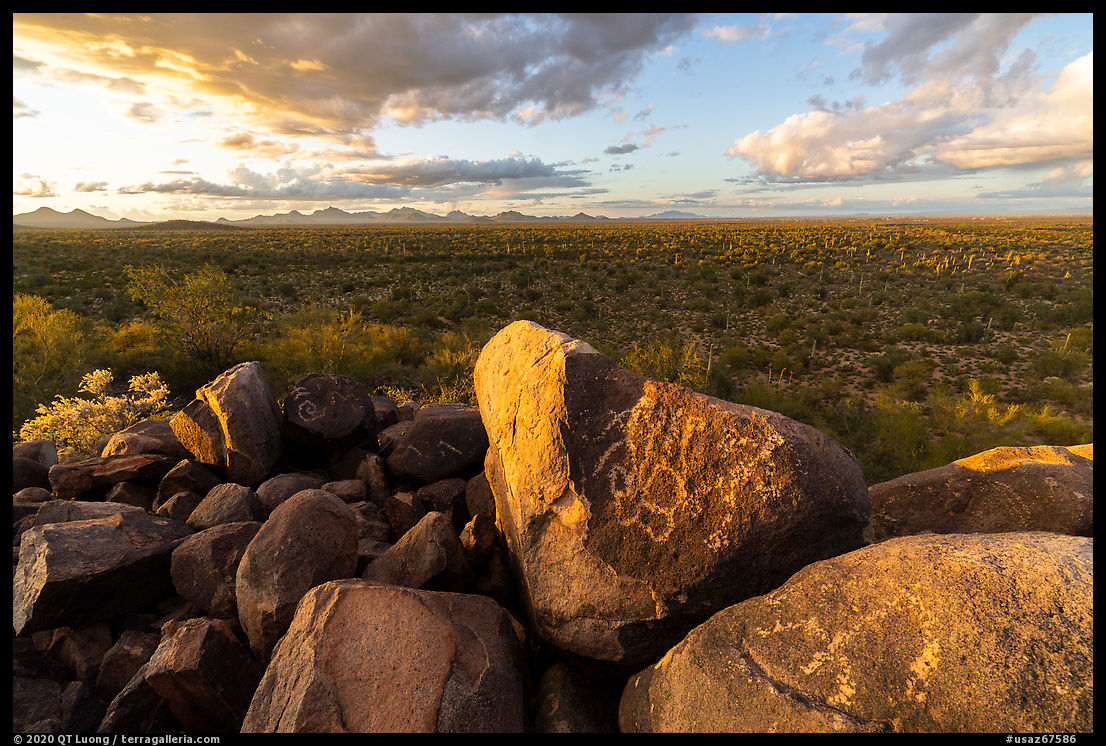A Tree in Ironwood Forest National Monument
No Comments
Part 3 of 5: 1 | 2 | 3 | 4 | 5
Of all the North American deserts, the Sonoran Desert is distinguished by its trees – the Joshua Tree growing in the Mojave is a yucca and lacks wood. Desert ironwood trees (Olneya tesota) grow only in the Sonoran, where they are one of the biggest and oldest plants. The ironwood is the “desert tree of life” as the size of its canopy makes it a great perch for birds and its density creates a milder microclimate facilitating the growth of other plants (230 species have been recorded). In the harsh desert, ironwoods provide oases of sheltered habitat with more organic matter, lower temperatures, but also less frost. Like all the disparate trees also named ironwood, the desert ironwood has a iron-like wood of exceptional density that sinks in water. Compared to the saguaro which is protected throughout Arizona and got its namesake national park, the desert ironwood didn’t get much love until Ironwood Forest National Monument was established near Tucson in 2000. Due to the pourous granite soil composition, the area protected by the monument supports some of the highest densities of ironwood trees in the Sonoran, and those trees have more ecological associates there than anywhere else this phenomenon was measured.

You’d think that with the name of the monument, ironwood trees are everywhere, but author Laurent Martres wrote in his excellent Photographing the Southwest: Volume 2 – Arizona that he didn’t see any of them! One problem is that the ironwood tree is very had to tell apart from the much more common mesquite tree, which is not limited to the Sonoran Desert. From a distance, little distinguishes them, so you have to come close and examine their leaves, a rather time-consuming endeavor. The star plants of the Sonoran are the striking columnar cacti such as the giant saguaro cactus. Despite their crucial ecological role in the desert, ironwood trees are not particularly visually remarkable, except during the short period of time when they are in bloom. This can occur anytime from late April to June, but not every year yields abundant blooms. Since the monument was named after them, I stayed constantly on the lookout for them on four different days, but the following is the favorite image I was able to make.

The desert is usually a place of sparse vegetation, but it wasn’t that easy to find a well-isolated ironwood tree. With an eye-level viewpoint, branches merge with the background, so I wanted to photograph the tree from a low vantage point to detach as much of it against the sky as possible. This eliminated trees surrounded by scrub, as well as viewpoints from which the horizon wasn’t low enough. Although the density of ironwood trees is higher near Ragged Peak, it was at an outlying area, near Cocoraque Butte that I eventually found a nice specimen that met those conditions. Cocoraque Butte is an archeological site that is unsigned and unmarked, and getting there required driving badly rutted tracks that necessitated a high-clearance vehicle. I first saw the tree in the afternoon, and I went photographing the nearby petroglyphs, making a mental note to return to the tree after sunset.

During daytime, in sunny conditions, shadows from direct sunlight would obscure part of the tree or break its organic shape, while in cloudy conditions, the bright white sky would be unappealing. At twilight, after the sun has set, the light becomes soft, but unlike what happens in cloudy conditions, it has directionality. The more you wait after sunset, the more directionality there is, as the western horizon stays relatively bright, while the sky above grows darker, eventually taking on a beautiful color with a gradient. The challenge is that the light becomes quite dim. I was lucky that this particular evening was windless, making it possible to take 30 second exposures. I didn’t want to increase ISO beyond 400 since the photograph would rely so much on fine detail. This resulted in an aperture of f/7.1, not enough to keep the tree and the distant landscape within the depth of field, even with the 24mm focal length. I made two exposures, one focussed on the tree, the other on the hill, and merged them. On a large version, you can make out each individual leaf as well as a range of tones.
Part 3 of 5: 1 | 2 | 3 | 4 | 5

